Discussions of identity in Taiwan are seldom clearcut. Viewed through the prism of the country’s democratization, things can be even more opaque.
For those with rudimentary knowledge of these issues, this short book is no primer; indeed, even the initiated may find it challenging. But those in the latter camp should not be put off: The effort is commensurate with the reward.
In translating (and reworking) his original Chinese-language text from 2010, Hsiau A-chin’s (蕭阿勤) aim was to plug gaps in current research, which has typically focused on the 1980s as the pivotal decade in the formation of a distinct Taiwanese identity.
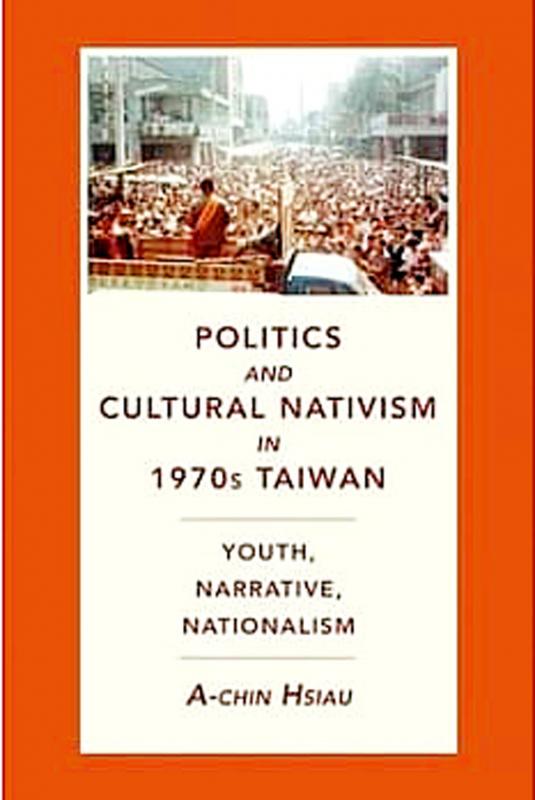
In her introduction to an online book launch for Hsiau’s monograph, Chang Bi-yu (張必瑜) agreed that analysis of sociopolitical developments in 1970s Taiwan remained “murky.” This made Hsiau’s work “timely and long overdue.”
“Cultural change, as well as political transformation do not happen overnight,” says Chang, who is deputy director of the Center of Taiwan Studies at the School of Oriental and African Studies, University of London, which hosted the launch. “Taiwanese transition started well before the lifting of martial law. Unfortunately, there has been very little research on this period written in English, especially in the culture sphere.”
Hsiau’s second aim was to stress that “generational factors” rather than “provincial background” played the decisive role in motivating and unifying activists and dissidents.
Adopting sociologist Karl Mannheim’s approach to social conflict, Hsiau focuses on three overlapping “generational units” — cultural activists who rediscovered the Taiwan New Literature (台灣新文學) movement of the Japanese colonial era; writers and advocates of socially-conscious Nativist literature (鄉土文學); and dangwai (黨外, “outside the party”) intellectuals influenced by the anticolonial movement of the 1920s.
While conceding that background did influence the postwar generation of Taiwan-born activists — especially Taiwanese literati of “local” descent and political activists of “Mainland” origin — Hsiau asserts that it was less important than it became in the 1980s.
“For most of the 1970s,” he writes “the critique of KMT [Chinese Nationalist Party] rule arising as a result of Taiwan’s diplomatic failures went across provincial boundaries.”
WIDER NARRATIVE
Many key players resist pigeonholing. Chen Ying-zhen (陳映真) is a good example. Born at the tail-end of the colonial era, Chen was a Hoklo Taiwanese whose works featured mainlanders and themes of exile. He remained committed to “reunification” his entire life.
Although Chen rejected the label — something that goes unmentioned — he is considered a key exponent of Nativism, which was an attempt to root literature in the lived reality of ordinary Taiwanese, rather than to assert a separate identity for them. Along with contemporaries such as Huang Chung-ming (黃春明) and Wang Chen-ho (王禎和), Chen was part of a “return to reality” (回歸現實) generation that sought to emplot events in Taiwan within a wider historical narrative of Chinese nationalism.
The events in question were the aforementioned “diplomatic failures” — notably the Diaoyutai (釣魚台) dispute that began in 1969 and Taiwan’s exclusion from the UN in 1971. While the latter was of more obvious significance, it was the Defend the Diaoyutais (Baodao, 保釣) protests of 1971 that sparked a new generational consciousness.
SOWING THE SEEDS
These protests were not directed at the government, as indicated by the involvement of KMT stalwarts such as future president Ma Ying-jeou (馬英九). Nevertheless, Hsiau contends, they marked a turning point for Taiwanese of all stripes. Ironically, by inculcating nationalism in the postwar generation, the KMT had facilitated future dissent.
“Because of the incident, we came to understand how to take action,” said the late writer and activist Wang Tuo (王拓) who went on to become secretary general of the Democratic Progressive Party (DPP).
Still, it wasn’t until the 1978 publication of Taiwan’s Past and Future by Annette Lu (呂秀蓮), Taiwan’s vice president from 2000 to 2008, that there was an attempt to “boldly transcend the Sinocentric position by adopting the standpoint of Taiwan per se.”
Even then, Lu trod cautiously, insisting that “to love Taiwan is to love China, to talk Taiwanese is to talk Chinese, to cherish Taiwanese culture is to cherish Chinese culture”
This was “an attempt to maneuver within the system,” says Hsiau. “But if one reads between the lines, Lu’s critique was radical.” In referring to the centuries of “complete manipulation by others,” Lu was hinting “that the KMT, like previous rulers in Taiwan, was a colonizer.”
SPEAKING FROM THE HEART
Lu’s approach represented another transition, but the Chinese nationalist narrative continued to resonate. As late as 1991, Huang Huang-hsiung (黃煌雄), who chaired the Transitional Justice Commission (促進轉型正義委員會) in 2018, was identifying Taiwan’s anticolonial hero Chiang Wei-shui (蔣渭水) with Sun Yat-sen (孫中山).
Following criticism from fellow historian Chang Yen-hsien (張炎憲), Huang edited sections of his works on Jiang to explain that political repression had made it difficult for him to present an “impartial perspective from which to treat the history of Taiwan’s modern nationalist movement.”
So, were the writers and activists of the 1970s masking their intent for fear of retribution or to gain for personal advantage? Hsiau rejects both “essentialist” and “instrumentalist” interpretations. Wherever their political journeys took them, the return-to-reality trailblazers had been “heartfelt [in their] declarations of Chinese national identity,” Hsiau says.
“We have to consider the possibility that if a person says he or she feels Chinese, he or she is at that moment in time.”
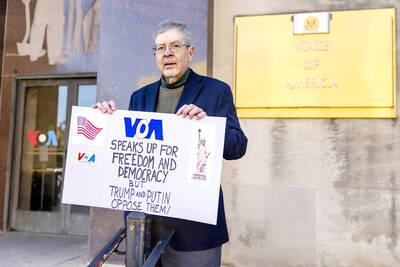
As Donald Trump’s executive order in March led to the shuttering of Voice of America (VOA) — the global broadcaster whose roots date back to the fight against Nazi propaganda — he quickly attracted support from figures not used to aligning themselves with any US administration. Trump had ordered the US Agency for Global Media, the federal agency that funds VOA and other groups promoting independent journalism overseas, to be “eliminated to the maximum extent consistent with applicable law.” The decision suddenly halted programming in 49 languages to more than 425 million people. In Moscow, Margarita Simonyan, the hardline editor-in-chief of the
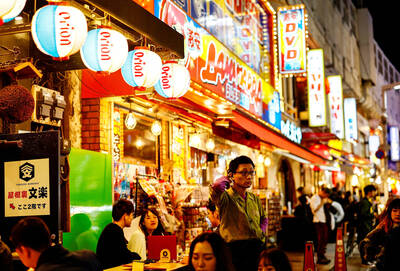
Six weeks before I embarked on a research mission in Kyoto, I was sitting alone at a bar counter in Melbourne. Next to me, a woman was bragging loudly to a friend: She, too, was heading to Kyoto, I quickly discerned. Except her trip was in four months. And she’d just pulled an all-nighter booking restaurant reservations. As I snooped on the conversation, I broke out in a sweat, panicking because I’d yet to secure a single table. Then I remembered: Eating well in Japan is absolutely not something to lose sleep over. It’s true that the best-known institutions book up faster
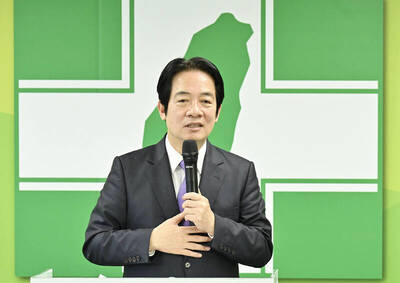
The latest Formosa poll released at the end of last month shows confidence in President William Lai (賴清德) plunged 8.1 percent, while satisfaction with the Lai administration fared worse with a drop of 8.5 percent. Those lacking confidence in Lai jumped by 6 percent and dissatisfaction in his administration spiked up 6.7 percent. Confidence in Lai is still strong at 48.6 percent, compared to 43 percent lacking confidence — but this is his worst result overall since he took office. For the first time, dissatisfaction with his administration surpassed satisfaction, 47.3 to 47.1 percent. Though statistically a tie, for most
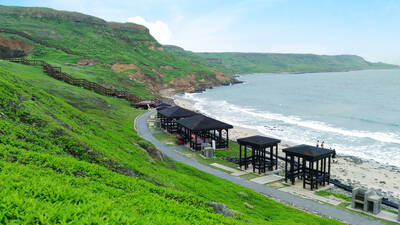
Though the total area of Penghu isn’t that large, exploring all of it — including its numerous outlying islands — could easily take a couple of weeks. The most remote township accessible by road from Magong City (馬公市) is Siyu (西嶼鄉), and this place alone deserves at least two days to fully appreciate. Whether it’s beaches, architecture, museums, snacks, sunrises or sunsets that attract you, Siyu has something for everyone. Though only 5km from Magong by sea, no ferry service currently exists and it must be reached by a long circuitous route around the main island of Penghu, with the